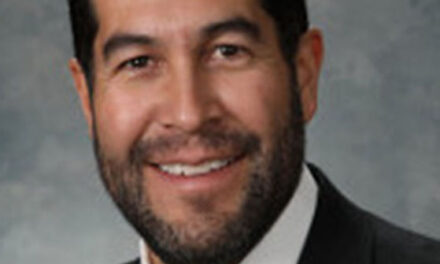Local government agencies are in a holding pattern as they wait for the federal government to release the final rule which will allow them to spend millions of dollars on local infrastructure projects in the next five years.
The American Rescue Plan Act was signed into law in March, providing money that can be used by local and state agencies in four categories — to respond to the COVID-19 public health emergency or its negative economic impact, to provide premium pay to workers performing essential work during the COVID-19 public health emergency, for the provision of government services, and for necessary investments in water, sewer or broadband infrastructure.
Valencia County received the largest amount of the local jurisdictions — $14,895,745. The city of Belen received $1,828,292, village of Bosque Farms received $958,277, village of Los Lunas got $3,971,806, the town of Peralta received $882,624 and the city of Rio Communities got $1,122,193.
Disbursement of the funds and deadlines for use are the same for all jurisdictions. The first disbursement has already been made and the second will be in May of 2022. The entire amount has to be obligated by Dec. 31, 2024, and all projects have to be completed by Dec. 31, 2026.
Jeremias Silva, the grant manager for Valencia County, said before any of the funds can be used, the U.S. Treasury has to issue a final rule outlining allowable uses. When Silva presented the county plan to county commissioners for its ARPA funding in July, the anticipated release date of the final rule was the end of August, but as of Sept. 3, the release has been moved to mid-September, he said via email.
“The moment that it hits our emails, we will begin verifying all the projects that were discussed in the presentation at the commission meeting and begin the procurement process,” Silva said in the same email, in regards to the county’s projects. “We are hoping to have all projects discussed in the (July) presentation ready to go starting in October.”
Belen: $1,828,292
With more than $1.8 million in American Rescue Plan Act funding, the city of Belen is planning on allocating the money to mainly shovel-ready, water and sewer projects.
Belen Mayor Jerah Cordova said the council recently discussed projects during a workshop, and will soon vote on what projects are to be prioritized.
“During the workshop, we had a discussion about possible usage for those funds,” Cordova said. “Staff presented us with a listing of possibilities for use of the funds, and through discussion we determined what we think it’s going to be used for.”
City staff is currently putting together the final details and list before the council approves it.
“Right now, we have a lot of shovel-ready projects, and we want to make sure we’re pushing forward on those,” the mayor said. “We will take those funds provided in the (American Rescue Plan Act) and use it for matches, for water and sewer infrastructure projects.”
Cordova said by using the ARPA funding for these shovel-ready, water and sewer projects, it will free up the money the city had previously budgeted for these projects and allocate it for others.
“It frees up $1.8 million in our budget to use for other things, and staff is currently putting together a more comprehensive plan to include paving projects, and other special projects,” Cordova said.
Some of those other projects the mayor pointed out had funding shortfalls, such as painting the water tower, reconstructing certain roads.
The ARPA funding the city received will help with Phase 1 of the Aragon Road project, which is replacement of water and sewer infrastructure from Mesa Road to Main Street. The project also includes a total repaving of stretch of road.
“Instead of the city having to self fund much of the water and sewer improvements, we’ll be able to use the recovery funds for the remaining amount,” the mayor said. “Thankfully, we also got some state funding for the project.”
Another project the funds will help with is the water and sewer improvements in the La Luz and San Lorenzo neighborhoods, as well as about five or six other projects around the city with water and sewer components.
“We’ve been very blessed in the city because we’ve had a very good economy over the last couple of years, and what we saw is a good increase in the amount of (gross receipts taxes),” Cordova said. “And if you add to that, the additional recovery funds we’ve been receiving, such as from the CARES Act, it allows us to focus on the critical needs we have in the community.”
The mayor said the city is currently working on at least 20 “sizable” projects, and with the help from a variety of funds are moving them forward.
Bosque Farms: $958,277
In the village of Bosque Farms, all of the federal funding will be used for a second clarifier at the village wastewater treatment plant, said Bosque Farms Clerk/Administrator Gayle Jones.
The village has been working to fund the additional clarifier for several years, as its system ages and has taken on the load of treating wastewater from the neighboring town of Peralta.
Los Lunas: $3,971,806
Los Lunas Village Council voted to put the $3.9 million the village received towards two separate projects — improvements to the Carson Park neighborhood and a service line extension along N.M. 6.
Los Lunas Public Works Director Michael Jaramillo said improvements to Carson Park, which was allotted $2 million of the funds, include improving stormwater management and to replace water system pipes in the area that are no longer at industry standard.
“This is an older area of our community that really needs some upgrades when it comes to stormwater management,” Jaramillo said. “We have issues when it rains with mass flooding and ponding, which can definitely be bad for mosquitoes.”
The rest of the $1.9 million will go towards a service line extension that will run along N.M. 6 from the central railpark to the Facebook Data Center.
Peralta: $882,624
The Peralta Town Council has yet to vote on how to use the funds received through the American Rescue Plan Act, half of which they received this July.
The council has spoken about using part of the money to fund a well on the park area being built around the planned community center. According to Deputy Clerk Steve Robbins, the rest of the money will go towards wastewater, but that nothing has been officially decided yet.
Rio Communities: $1,122,193
The newest municipality in the county received nearly the same amount of funding from the American Rescue Plan Act as it has in its yearly budget.
Rio Communities City Manager Dr. Martin Moore said while the council is still mulling over the use of the funding, it will have to be spent over two fiscal budgets.
“There are some basic areas (the council) is looking at,” Moore said, “but at the staff level, were looking at a formula the treasury department provided for loss revenues. That’s one area we’re looking at.”
Most of what the council has been discussing includes capital projects that the ARPA could fund, as well as a program related to COVID or health care, the city manager said.
One item the city manager said he will bring up with the council is some sort of release for residents related to utility bills. The only “utility” the city of Rio Communities has is for solid waste.
“What they asked the staff is to bring them water and waste water projects, which has been a major discussion,” Moore said. “Another is we have cable (service) but we don’t have city-wide fiber (for internet).
“We’re also in the process of analyzing our franchise agreements to see which companies we might want to talk with about opportunities for our residents,” Moore said.
“What we’d really like to do is provide as much of a direct benefit to the residents of Rio Communities as we could,” the city manager said.
Moore said he expects the council to vote on projects the American Rescue Plan will fund in October.
“We really want to put something concrete in place,” Moore said. “That $1.1 million, if you spend it all in one year, it’s our entire general fund budget for this year. This is going to help the city, and that’s what we want to do. Our council wants a solid plan.”
Valencia County: $14,895,745
The most costly project the county is planning for its ARPA funds is a long delayed expansion of the Valencia County Detention Center, with a price tag of $7 million.
The county commission has been trying to expand the jail since 2011, with nearly $500,000 already spent on architectural fees and the purchase of portable two-bunk cell units that have been sitting, unused, for about a decade. VCDC Warden Randy Gutierrez told commissioners in July he had confirmation from the project architect that the cells were still usable.
Another key area the ARPA funds can address is premium pay for local government employees who are substantially dedicated to mitigating or responding to COVID-19. Silva said some employees are eligible to get premium pay up to $13 an hour, not to exceed $25,000 per employee.
“The premium pay must be disbursed with the intent on taking care of employees that are at the lower end of the pay grade,” Silva said.
The budgeted amount of premium pay for eligible county employees is about $1 million, he said.
The assessor’s office has a $500,000 project to do three flyovers of the entire county with an airplane equipped with enhanced imagery to update the county’s GIS system. The resulting images would allow the office to update its maps without sending assessors into the field. The public would have access to the information gathered, Silva said, such as real estate agents, surveyors, title companies, as well as individuals and businesses.
The county has also allocated $400,000 to do another round of small business grants, similar to the ones funded by the CARES Act in 2020, Silva said.
“We want to have caps this time and only for the unincorporated areas of the county,” he said. “We’ve had various small businesses and impacted industries reach out to see if the county will offer this again. We would like to spread the love a little more across more small businesses, hit more non brick-and-mortar businesses and get more home-based businesses.”
Another $400,000 has been allocated for a culturally appropriate food distribution program, which would provide food boxes to all disadvantaged communities in the unincorporated county starting next year. Silva said often boxes prepared on the East coast often contained items that New Mexicans don’t typically use and the food is wasted.
“We have identified local stores willing to provide local, culturally appropriate food — beans, rice, tortillas, potatoes,” he said. “We think we can provide about 1,000 boxes a quarter.”
Silva said there is $200,000 allocated to make enhancements to existing county community centers, with the option to design new centers and parks.
“We need to do community outreach to see what they want to have incorporated into these projects,” he said. “It can be everything from a splash pad to grass areas and sports nets. You guys have heard it — kids need something to do out there (in unincorporated areas) rather than having to come into town.”
The county is also hoping to partner with interested governments or entities on a large-scale broadband project aimed to serve the disadvantaged communities in Valencia County, Silva said.
“We are currently reaching out to potential partners so that a round table discussion can take place to define the details,” he said.



















